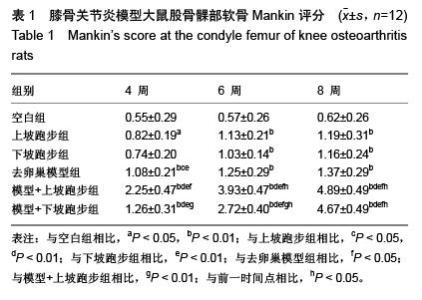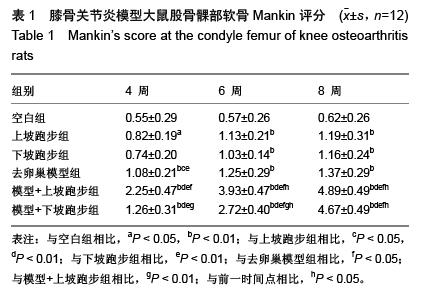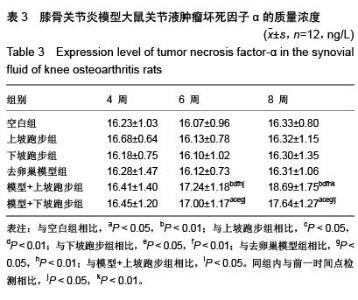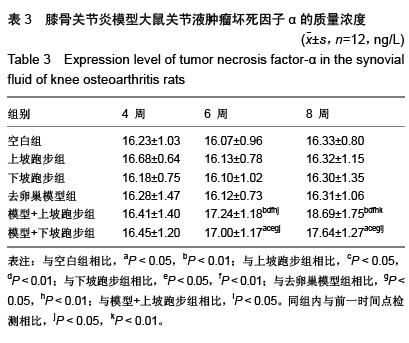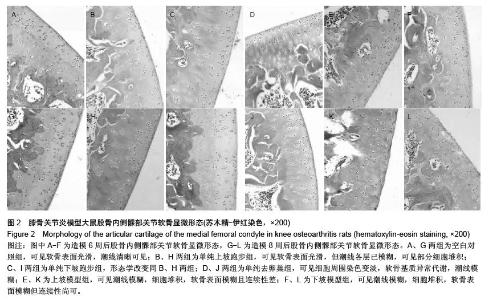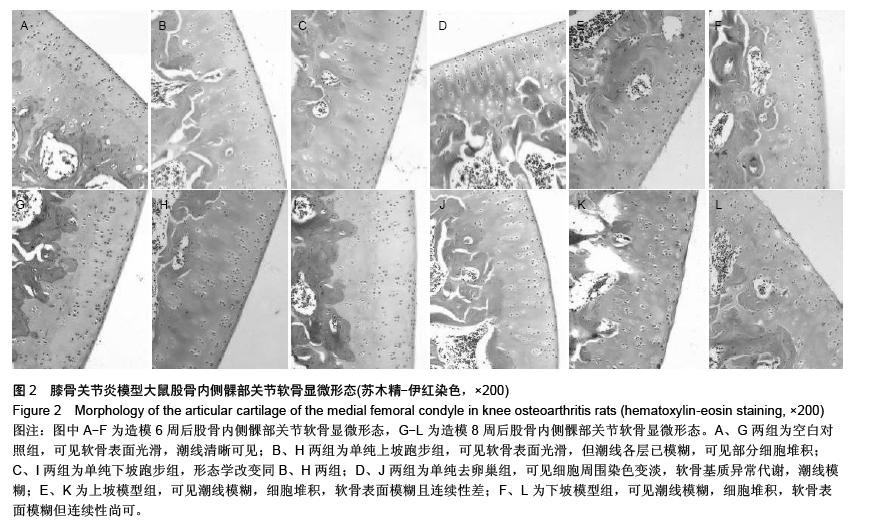Chinese Journal of Tissue Engineering Research ›› 2016, Vol. 20 ›› Issue (2): 197-201.doi: 10.3969/j.issn.2095-4344.2016.02.008
Previous Articles Next Articles
Effect of uphill or downhill running training on articular cartilage degeneration and inflammatory responses of knee osteoarthritis rats
Wang Wen-sheng, Chen Wei, Shen Bao-lei, Xu Bo, Zhang Li, Jiang Zheng
- Fujian University of Traditional Chinese Medicine, Fuzhou 350122, Fujian Province, China
